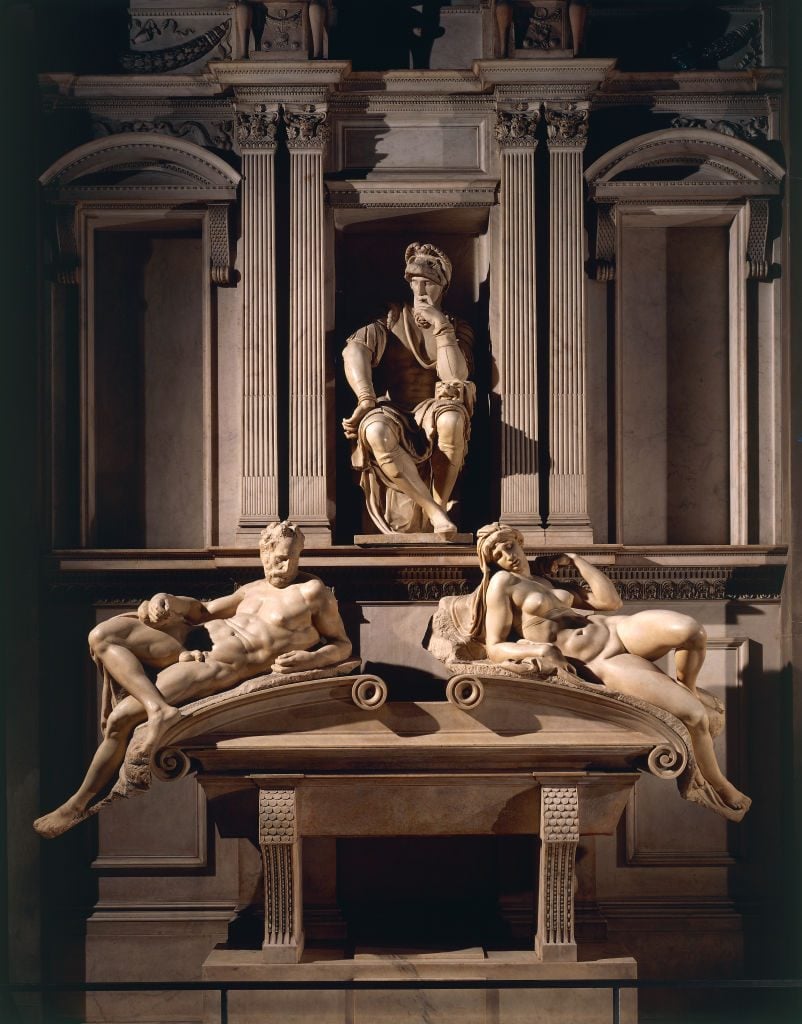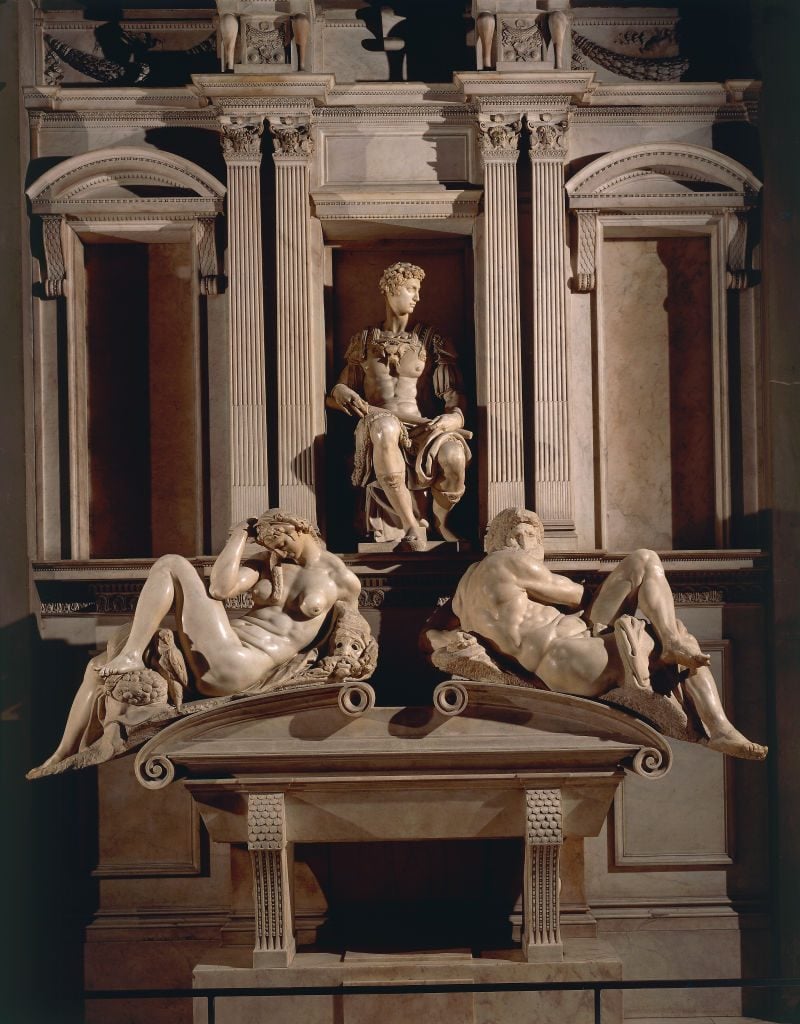On View
Conservators Cleaning Michelangelo’s Famed Medici Family Chapel Had an Unlikely Ally: Bacteria
After more than eight years of work, conservators presented the newly restored tombs in Florence this week.

After more than eight years of work, conservators presented the newly restored tombs in Florence this week.

This week, to mark the 545th anniversary of Michelangelo’s birth, conservators in Florence unveiled the newly restored Medici family chapel designed by the Renaissance master.
Their eight-year effort to clean the tomb was aided by an uncommon tool: bacteria.
Starting in 2019, experts quietly introduced varying strains of bacteria to the marble sculptures of the New Sacristy, where multiple members of the Medici dynasty are entombed. The microbes promptly set about eating centuries’ worth of grime, glue, and other debris that had discolored the sculptures on the tombs.
The bacteria were especially adept at tackling one substance tarnishing Michelangelo’s handiwork: organic fluids that had seeped from the long-rotted corpse of Alessandro Medici, a one-time ruler of Florence, whose body had been deposited in a sarcophagus without being properly eviscerated.
One hungry strain in particular, Serratia ficaria SH7, managed to do away with the stains caused from the fluid in just a matter of days, according to the New York Times.
“SH7 ate Alessandro,” Monica Bietti, the former chief of the Medici chapels museum who led the all-female team in the restoration project, told the paper last year.

The tomb of Giuliano de’ Medici, Duke of Nemours, 1524-1534 at the New Sacristy, Medici Chapels, Basilica of Saint Lawrence in Florence, Italy, 2017. Courtesy of Getty Images.
Bietti, along with several other conservators on the project, spoke at the unveiling sponsored by the Academy of the Arts of Drawing this week.
“The restoration of one of the most symbolic places of art required knowledge, experience, and science, combined with the qualities of sensitivity and intelligence,” she said.
“For this reason, the work was tested from the start and then subjected to constant optical, methodological, and scientific checks.”
Michelangelo was commissioned to design the New Sacristy, located among the Medici Chapels in Florence’s San Lorenzo church, in 1520. The tomb’s frontispieces feature sculptures depicting two members of the Medici family—Lorenzo di Piero, Duke of Urbino and Giuliano di Lorenzo, Duke of Nemours—as well as figures symbolizing dusk, dawn, night, and day.